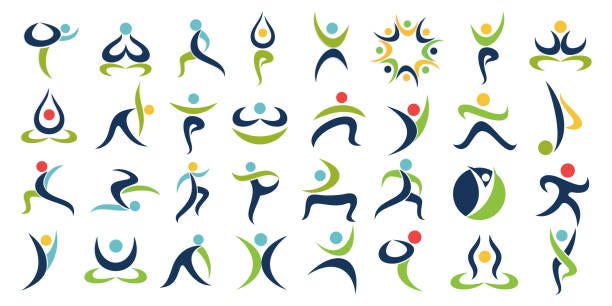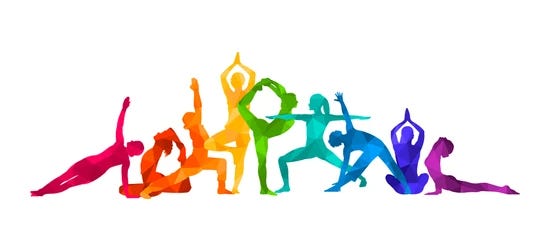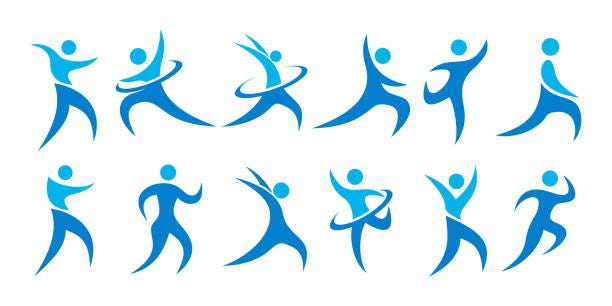In educational settings and workplaces, movement is still considered to be a bonus like a break, a behaviour to manage or a reward once the real work is complete. But for many of us, movement isn’t optional. It’s central to learning, regulation, communication and safety. When schools and workplaces treat movement as an interruption rather than a need, they misunderstand both its purpose and its necessity.
Respecting movement means respecting people. It’s a shift away from controlling bodies toward listening to them.
Movement as communication
For many of us, movement carries meaning. Our movements are not random or purposeless. They are part of a our expressive toolkit, especially when spoken language isn’t always reliable or sufficient.
Movement is language. Rocking, flapping, pacing, tapping or shifting posture can communicate excitement, overwhelm, focus or distress just as clearly as words.
The problem comes when these forms of communication are pathologised. A teacher dismissing a child’s fidgeting as disruptive misses the chance to understand what the child is expressing. A workplace manager who insists an employee sit still during meetings may silence valuable contributions.
Supporting movement as communication needs curiosity:
Noticing patterns (does the person pace more during transitions?).
Asking what it signals (is this regulation, excitement or a request for space?).
Validating it as communication, not dismissing it as meaningless.
SENDwise Hub is a reader-supported publication. To receive new posts and support my work, consider becoming a free or paid subscriber.
Movement and regulation
Stillness is often misinterpreted as the benchmark for calm. Fact is, that the body regulates through movement. Rocking, bouncing, tapping, swaying, stretching, running or pacing are essential strategies for nervous system balance.
When these strategies are denied, dysregulation builds. A child forced to stay in their seat when their body needs to move may escalate from harmless fidgeting to meltdown. An adult required to suppress pacing during a stressful meeting may lose the ability to think clearly, thus shut down.
Recognising this shifts the role of movement to a prerequisite for learning and functioning. It is not something people earn after finishing work; it is the only way they can do the work at all.
Differences in motor planning and coordination
Movement itself isn’t always straightforward. Some neurodivergent people experience differences in motor planning and coordination and these neurological differences affect how the brain sequences and executes movements.
This can make daily tasks like handwriting, tying shoelaces, cooking or navigating busy environments more demanding and exhausting. Importantly, these difficulties are not lack of ability, but neurological wiring.
Unfortunately, these differences are still frequently misunderstood. Children may be labelled as clumsy or careless. Adults often feel pressure to mask by working harder or quietly overcompensating.
The better approach is adaptation. Offering tools (like keyboards instead of handwriting for instance), breaking tasks into steps and allowing extra time respects the person’s autonomy while reducing barriers.
Sensory–movement connections
Movement and sensory processing are tightly connected. The vestibular system (balance and movement) and proprioceptive system (body position and pressure) directly influence how people feel in their bodies.
Some neurodivergent people seek vestibular input (spinning, swinging, climbing) because it helps them feel secure and organised, while others experience those same movements as disorienting or nauseating.
Proprioceptive input varies as well. Some need heavy pressure, weighted blankets or stretching while others avoid touch because it feels overwhelming.
What’s crucial to understand is that these needs fluctuate or change completely. A child who finds swinging calming one day might refuse it the next because their nervous system is in a different state. An adult might pace constantly during times of stress but sit more comfortably when settled.
Calling these shifts inconsistent misunderstands their dynamic nature. Instead, we need to see them as responsive adjustments to sensory load.
Movement and attention
A persistent misconception is that attention comes from stillness. The reality is the complete opposite: movement supports focus.
Fidgeting, doodling, walking or shifting position can keep the brain engaged with the task at hand. Denying movement undermines concentration.
Classrooms and workplaces that insist on stillness risk shutting out neurodivergent learners and employees who think best while moving. Accommodations like fidget tools, flexible seating, standing desks and movement breaks are evidence-based ways to support genuine attention.
Movement and emotional processing
Emotions are experienced in the body and movement is one of the primary ways they are processed. For neurodivergent people, myself included, this link is often especially visible. Running after conflict, jumping when excited, rocking when anxious or shaking to release fear are natural and effective ways to regulate feelings.
When movement is restricted, emotions stay trapped and become harder to manage. A child not allowed to run after a stressful school day may hold onto tension that later erupts. An adult discouraged from stimming during anxiety may carry stress for longer than necessary.
Supporting emotional processing means allowing movement outlets whether through structured activities like sport or informal strategies like pacing or stimming. It is a healthy way to support self-regulation and treat bodily autonomy with dignity.
Identity and stigma
One of the biggest challenges isn’t the movement itself but the judgement attached to it. Many neurodivergent children are told that stimming is weird or inappropriate. By adulthood, this message often turns into self-consciousness and suppression. An autistic adult who wants to rock in public may force themselves to stay still to avoid stigma, at the cost of their comfort and regulation.
Looking at movement as identity shifts the narrative. Movement is not only functional but expressive just as clothing, hair or speech style communicates self, so too does movement. Validating it dismantles shame and affirms authenticity.
Safety and autonomy
Movement can also be protective. Covering ears in a noisy space, leaving a crowded room or withdrawing from a group are safety strategies.
Respecting bodily autonomy means recognising when movement is about survival rather than choice. Forcing stillness, denying breaks and punishing movement strips away safety and undermines trust.
Inclusive environments honour autonomy by embedding movement into expectations.
This might look like:
Allowing students to leave the classroom when overwhelmed.
Designing workplaces with quiet rooms or flexible seating.
Building in movement breaks as standard practice, not as reward systems.
Movement is not a transaction. It is not a privilege. It is a non-negotiable, fundamental human need.
The economy of movement
From the moment children enter structured spaces they are taught that movement is negotiable. Not their need for food, not their need for sleep, not their need for air. But movement? That is up for debate.
The deal is clear, right? Sit still now and maybe you can move later. Do the work first, then earn the right to stretch, run, flap, jump or breathe in your own rhythm. The economy of movement runs on compliance as its currency.
The flaw in this system is fundamental. Because movement is not a luxury item. It is not a perk to hand out when a person has proven themselves deserving. Movement is regulation. It is expression. It is safety. Strip it away and you don’t get a more attentive child or a more productive employee. You get a body forced into shutdown and chaos they cannot escape.
Consider the child bouncing in their chair during a spelling test. To the teacher focused on classroom order, the bouncing looks like distraction because the rule book says “Stay seated, finish the test, then you can move”. But to the child, the bouncing is the only way the letters on the page can hold still long enough to make sense. Deny the bounce and you deny the test itself.
Or take the autistic adult in a corporate meeting, shifting, pacing, rolling a pen between their fingers. The request comes: “Can you sit still, please? It’s distracting.” The implication is that their stillness is more important than their contribution. But the pacing is what makes participation possible. Deny the pacing and you deny their voice.
The transactional model looks at movement as an after. After the work, after the compliance, after you’ve proven yourself capable of meeting someone else’s standard and expectations. But neurodivergent people live in a reality where movement is a before. Before learning, before calm, before communication, there is movement. It lays the groundwork for all of it.
When we treat movement as a bargaining chip, we send the insidious message that your body’s needs are inconvenient and your access to them depends on performance. Over time, many internalise this. Adults who rock or flap for regulation learn to do so in secret. Children who crave running to reset their nervous system learn to hold themselves rigid until they explode. The shame outlasts the rules.
What would it look like to dismantle this economy? To stop treating movement as a transaction and start treating it as infrastructure?
It looks like classrooms where walking while listening is as acceptable as sitting at a desk. Offices with standing spaces, pacing corridors and meetings designed for bodies in motion.
And more than the logistics, it would mean a cultural shift. Movement would not need to be justified or excused. It would not raise eyebrows or invite reprimands. It would be seen as what it is: the body speaking its language, asking for what it needs to stay steady.
There is no transaction here. No debt to be paid before a child can spin or an adult can pace. Movement is the baseline, not the bonus. The cost of denying it is too high for learning, for well-being, for dignity.
The only fair economy of movement is one where no one has to trade their authenticity, their safety or their comfort for the right to move.
⭐ Be part of The Unasked Collection and read this month's exclusive article written by Dr. Joanna Grace. The next article will be published on the 15th September.
⭐ Join me for the upcoming webinar on “Why hygiene is not just about cleanliness”.
⭐ If you’re looking for digital and affordable resources, you can browse them here.
⭐ If you wish to support the neurodivergent community, come for a browse here.
⭐ If you’re on any social media, come join me on Facebook, Instagram or LinkedIn.






Love this, so much great information, you've explained so many aspects in detail that can make a difference to others.
Absolutely all of this!!! We can't separate these needs and body functions. This profoundly affects my younger kiddo. Movement is first, then learning. And I hate that he is picking up on the negative statements from some adults to then talk so negatively about himself and his 'problem'. So your discussion on shame really resonates.